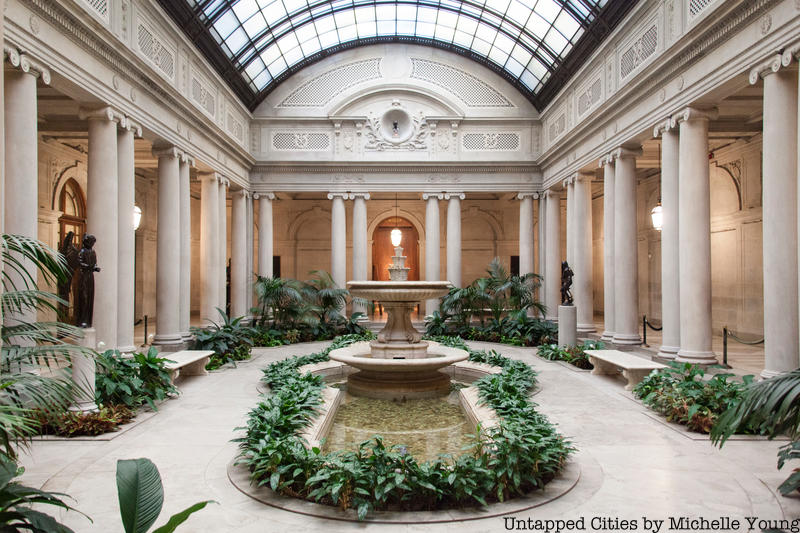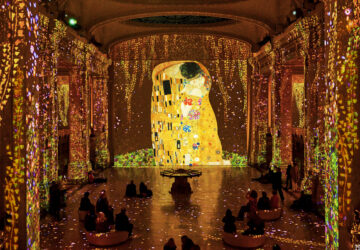
Henry Clay Frick’s house, designed and built between 1912 and 1914, stands majestically on Fifth Avenue.
“The Met is admired, but the Frick is beloved,” says architecture critic Paul Goldberger, comparing New York City’s largest and wealthiest museum with its reserved Fifth Avenue neighbor a few blocks to the south. The Frick Collection bestows the extraordinary benefit of letting patrons sit and contemplate Henry Clay Frick’s legendary collection of old masters in his serene mansion—all the big names are here—at least until the museum closes for an extensive renovation in 2020. And what a museum it is! It also recently had a starring role in the HBO Max television show The Undoing.
Frick furnished his 61-room house with Rococo and Renaissance furniture, and accumulated superb decorative arts, including Limoges enamels, Meissen porcelain, and Italian bronzes. His architect, Thomas Hastings of Carrère and Hastings, embellished the rooms with carvings of ancient symbolism, including acanthus leaves indicating long life (which Frick did not obtain) and laurel representing victory (which was often his). Frick’s instruction to Hastings had been to build him “a small house with plenty of light and air,” one that would be “simple, in good taste, and not ostentatious.” Architectural critic Dino Marcantonio calls the house a work of art in its own right, worthy of its own visit.
Whatever Frick’s hopes for simplicity, the house is one of palatial grandeur, says Metropolitan Museum Director Emeritus Philippe de Montebello. It pulls you in a magical way out of the din of the daily life of New York into its formal intimacy and serenity. There’s no other remotely comparable museum in New York, or perhaps anywhere else on the planet. When it opened in 1915 Architecture Magazine called it the most costly and sumptuous house in America.
Yet The Frick’s serenity today belies a history of labor violence, corporate contention, bitter family disputes, and even a Rasputin-like attempted assassination of Henry Clay Frick himself. The late 19th century’s Gilded Age had produced unprecedented wealth for a few legendary corporate titans who worked together and knew one another well. Of the immense fortunes of Morgan, Mellon, Rockefeller, and Carnegie, Frick’s was second only to Rockefeller’s, calculates Forbes. Or, as his biographer Samuel A. Schreiner summarizes, the span of Frick’s adult years “corresponded almost exactly with that of the fantastic period of explosive growth in material wealth that made the United States the richest, most powerful nation on earth.”
The Frick is the vision of this one man, says Xavier F. Salomon, Chief Curator of The Frick Collection, noting that a Frick picture is calm and elegant, a thing of extreme beauty. To understand the vision we must consider the man whose life, thoughts, and experiences led him to this collection. What kind of man would leave us this extraordinary legacy? His $117 million bequest to the public (roughly $2.3 billion today) was the largest in American history, and a story, according to PBS‘s Treasures of New York, of remarkable wealth and unprecedented generosity. What’s more, Frick in his will stipulated that “the entire public should forever have access” to the art, an astonishingly liberal concept for the day.
Yet in his Diary of an Art Dealer, René Gimpel vividly describes conversations with Frick in which “his cold eyes, grasping and hard under their genial look, remain a clear, beautiful blue.” And the obits written at his death were far from kind. The New York Tribune, for example, claimed that “The name of Frick is abhorrent to great numbers of his fellow citizens.” By most accounts, said the late Christopher Gray, architectural columnist for the New York Times, Frick was the “meanest, richest, striking-breakingest steel man you would ever want to meet,” a ruthless businessman who nonetheless developed a refined taste in art and who was devoted to music.
During his recent 2019 Frick exhibit, artist and author Edmund de Waal confronted the matter directly: Who is Henry Clay Frick becoming as he put together the collection? Who is this oligarchical American collector-industrialist hoping to be? De Waal thinks he sought to emulate and become part of a European aristocratic tradition. And that may be. But isn’t it equally possible that as he left behind the viciousness, brutality, and ugly, coke-induced pollution of Pittsburgh, he was seeking a life of equanimity in New York, as he withdrew from corporate battles and spent his evenings contemplating his paintings?





